The school snack that feeds a community
In a prefabricated classroom in Aleppo city, students of different ages lean over their notebooks, pen or pencil in hand, writing their lessons or drawing pictures. Almost eight years of conflict have left a trail of devastation in the city, but children are now back in school to learn and grow.
Their concentration is broken by a dinner lady bringing in fresh snacks packs, triggering instant excitement. The children happily receive their packages and begin to munch away.
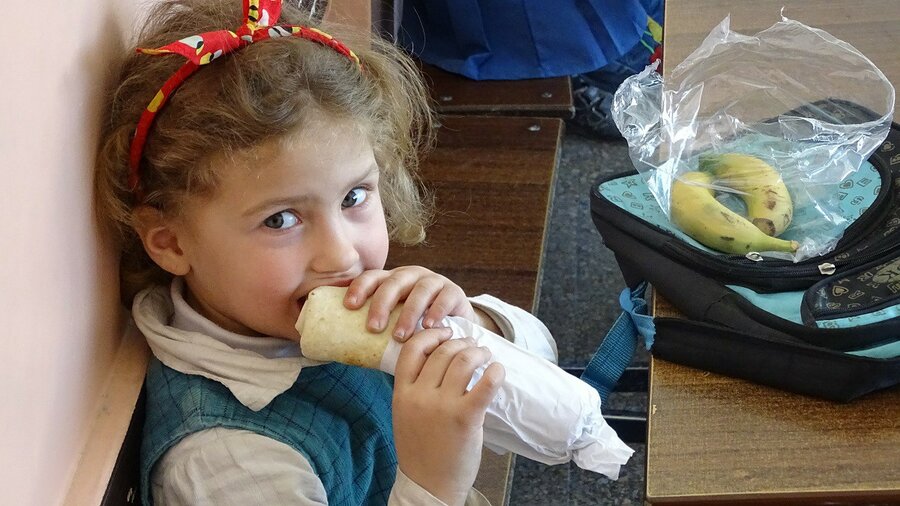
Hajar, a third grader, bites into a succulent cheese sandwich. She may be young, but she knows the value of education and nutrition. "I learn better in class after my meal," she says.
Hajar's sandwich does more than give her the energy to focus in school. WFP's freshly-prepared meals initiative also benefits the local economy, creating a domino effect of opportunity and hope that touches the lives of everyone across the supply chain, from producer to consumer.
Just as the taste and nutritional value of the snacks result from the combination of different ingredients, it's the coming together of different members of the community — the farmers and bakers who provide their fresh products, the traders and transporters who make them available, the factory workers who package them– that allows the school feeding programme to flourish.
Samer provides the bread for the sandwiches. He lost his bakery several years ago because of the conflict, but now he is back in business. With the fortified wheat flour he receives from WFP, he bakes fresh bread for the daily school meals of 10,000 school children.
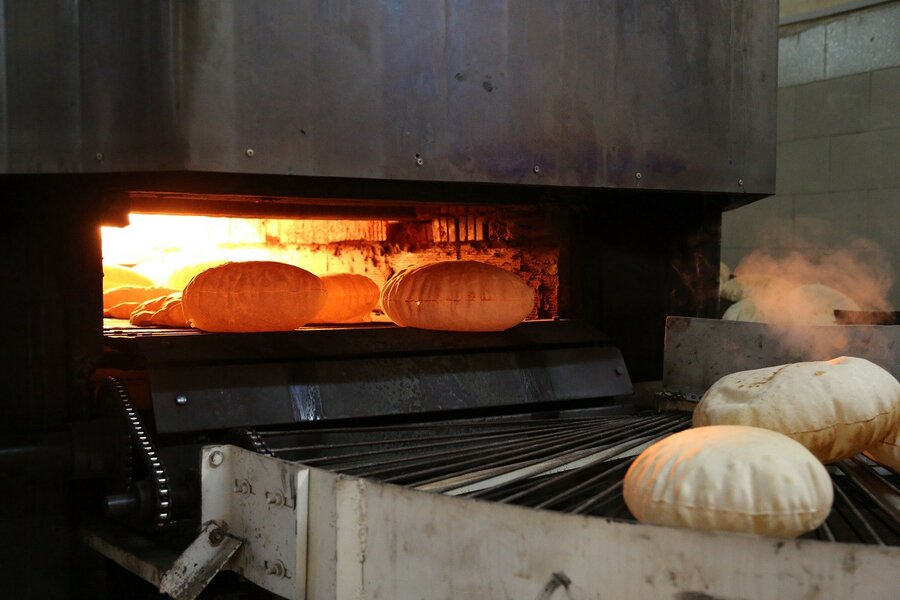
The cheese, labna and thyme in the sandwiches come from small and medium-sized traders who receive funds from WFP to buy fresh produce from local farmers in rural Aleppo. The farmers also grow vegetables like cucumbers, peppers and tomatoes which make the sandwiches more nutritious — and tastier.
All these fresh ingredients come together at the local factory of WFP's partner Namaa'. Here, 50 widowed women wash and peel the fruits and vegetables, wrap the sandwiches and package the meals by hand.
While the war has affected the lives of all Syrians, the burden of survival is even greater on women, many of whom have lost their spouses, being left as the breadwinners of large families. With the unemployment rate at 50 percent, it is hard for women to find jobs — and even more so for those who have never worked before as they relied on their husbands.
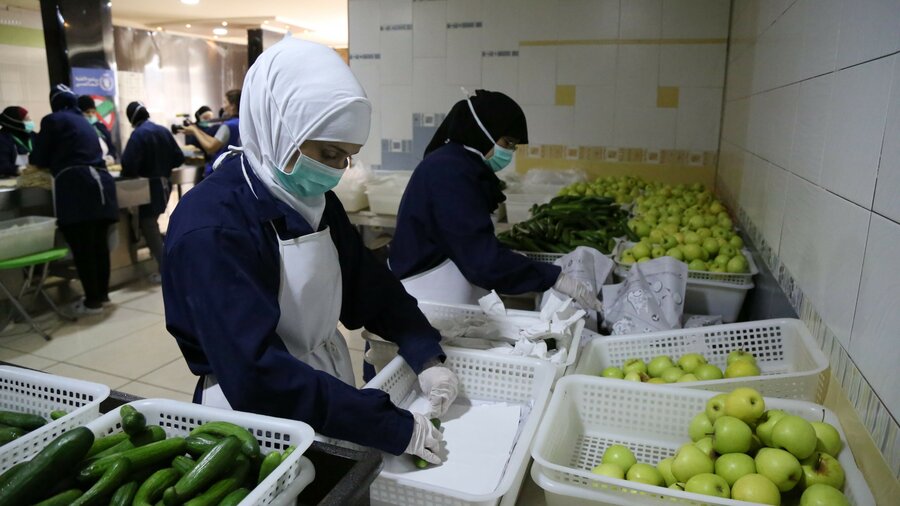
All of the 50 women preparing the sandwiches have suffered a great loss and have used their employment for the WFP school feeding programme to pull themselves and their families up from the wreckage.
Ola is 37 and the mother of four children. She lost her husband during the conflict. "My children are fully dependent on me," she says.
Before being employed by the sandwich factory, Ola had to pull her eldest son out of school for some time to help her cover the costs of living. Now, she and her co-workers enjoy the security of a steady income. Not only are they supporting the future of their community by helping kids stay in school, but they are also gaining a new sense of self-confidence and self-reliance.
Ola beams with pride as she recounts her latest achievements: "With the steady income, I can provide for my family and I enrolled my son back in school," she says. "I am even able to give the little ones some pocket money," she smiles.
The benefits of this programme are evident — not just for the students.
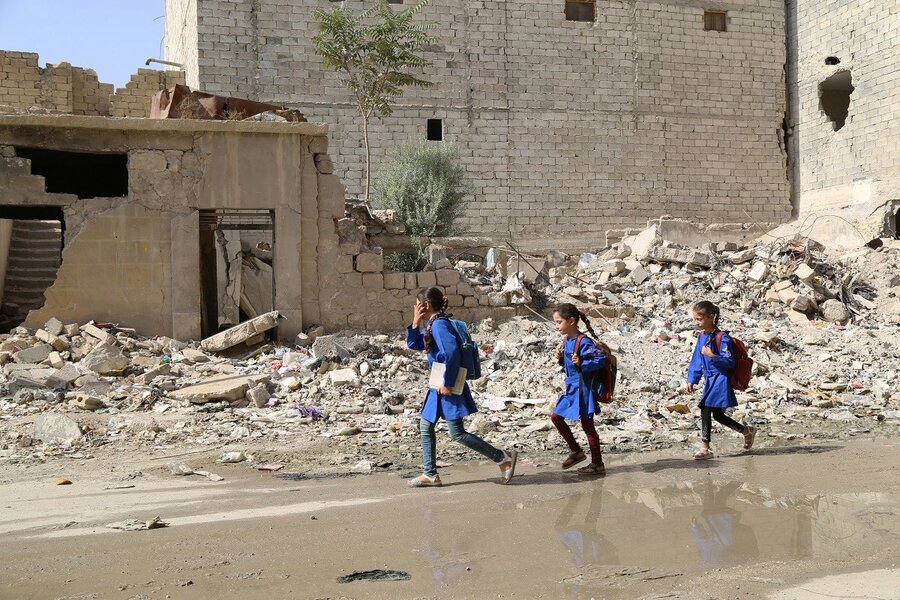
Their families now can spend less of their income on food, knowing that their children will receive a daily meal that is not only nutritious but also safe, thanks to WFP's work to ensure it is prepared according to strict hygiene standards and procedures.
Before WFP's school feeding project started, local farmers only sold 100 kg of produce on any given day. Now, they supply traders with 400 kg of food every day to cover the requirements of the project. This four-fold increase has invigorated the local market, injecting US$1.3 million into the city's economy, and creating employment opportunities.
On a recent visit to Aleppo, the Director of WFP's School Feeding Service highlighted the community element of the project "From the producers, to the traders, the factory workers and the transporters delivering the meals — school feeding programmes extend into the heart of the community and make a lasting impact."
And the programme continues to grow. Back at the factory, Ola tells us how enrolment in the school she prepares meals for nearly doubled in only one year, from 1,700 students to over 3,000.
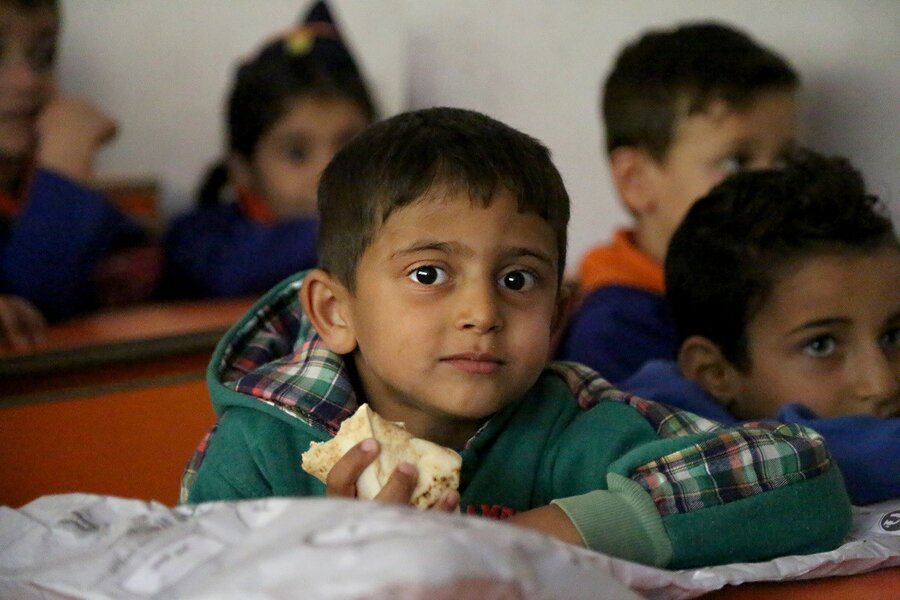
"More children are returning to school and those that have returned are staying for much longer. They are always excited to get their lunch. It's the highlight of their day," she says.
"As for me, I am happy I can feed not only my own, but also other Syrian children. In a way, they have become my own family."
Story by Marwa Awad


